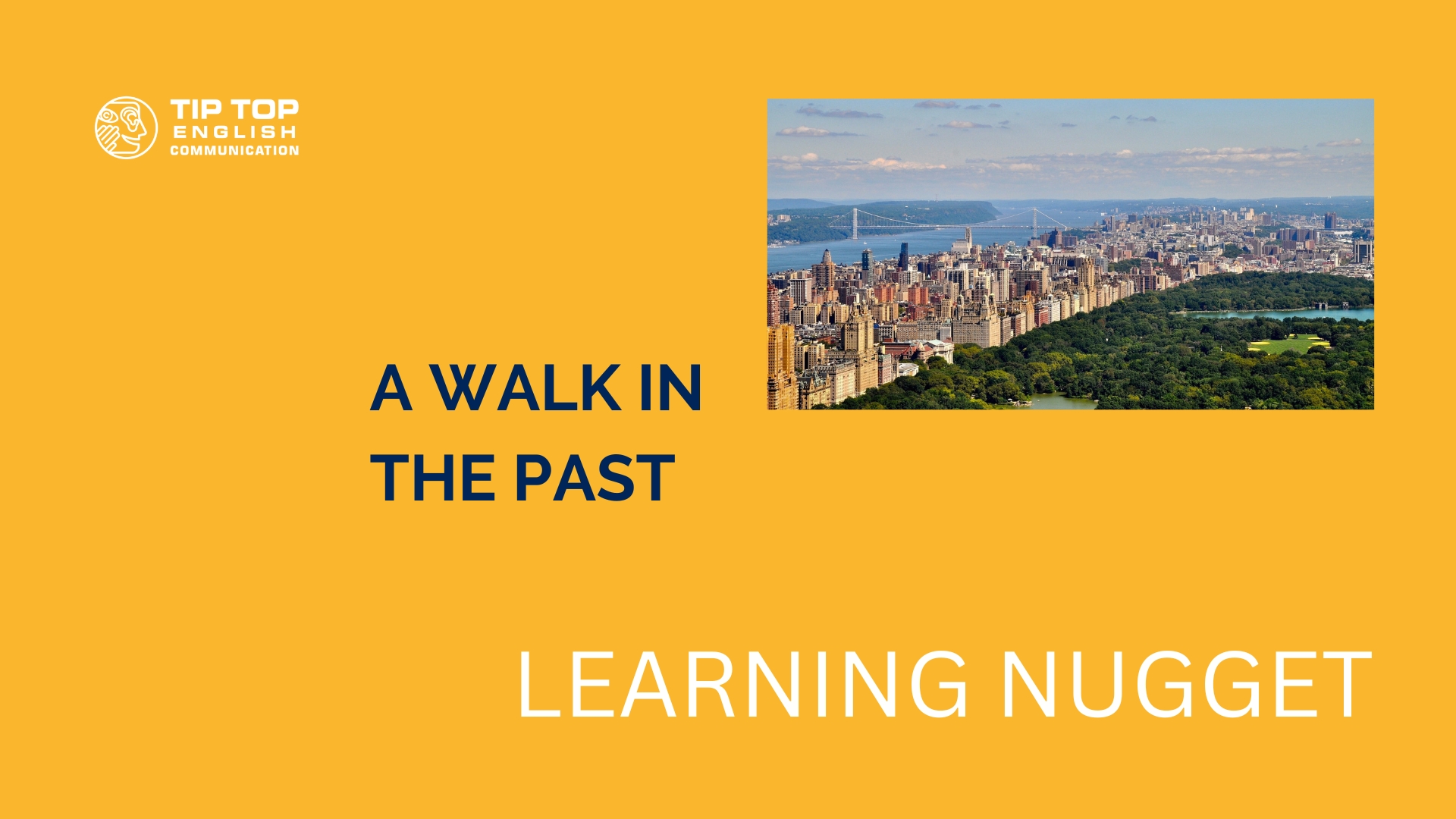A Walk in the Past
Large trees, benches, a playground, and a picnic table or two spread out across an area with mown green grass. None of us would be surprised to find a space like this in any town or city nowadays that was free for anyone to enjoy.
But it wasn’t too long ago that public parks were unheard of in the western world.
One of the places that helped change that was New York City’s Central Park, and in this Learning Nugget, you’ll learn how.
Parks: A symbol of democracy
As cities grew after the industrial revolution began in the late 1700s, it got harder for residents to access green areas for relaxation and recreation. Only the rich had enough money and free time to travel and escape the constant noise, grime, smells, and stress.
Building free public parks was seen as a way to fight this injustice. The first one in Europe opened in 1847 in England: Birkenhead Park. Just across the River Mersey from Liverpool, Birkenhead was in a region that had grown extremely rapidly and where conditions for the poor were miserable. The new park was an oasis for people of all social statuses.
In 1850, an American named Frederick Law Olmsted visited Birkenhead Park and fell in love with it. He thought it was a shame that in the United States – a place founded on the idea that all men were created equal – there was no place like it.
But there were well-connected people in the United States‘ largest city, New York, who wanted to create one, and Olmsted soon became their choice to lead the effort.
Creating Central Park out of swamps and rock
Olmsted submitted an article praising Birkenhead Park to a magazine run by Andrew J. Downing, a supporter of building Central Park. Downing published the article in 1850, using it as an argument for his views.
The same year, Downing introduced Olmsted to the architect Calvert Vaux, and the two formed an important friendship.
In 1853, the government purchased the land where Central Park now sits. In 1857, connections and fortune led to Olmsted becoming superintendent of the Central Park project. The next year, the city held a competition to find the best design for the park.
Olmsted teamed up with Vaux to create one, and the committee chose theirs out of 33 options. What stood out about their plan was how it cleverly separated areas of the park meant for walkers, leisure carriage riders, and commercial traffic using picturesque landscaping.
Central Park was built on land that was part swamp and part rock. To cover the marshland, around two million cubic meters of earth were moved. To get through the rock, huge amounts of gunpowder were used. To beautify the land, around 270,000 trees and shrubs were planted. Along with those projects, over 20,000 workers created roads, paths, bridges, ponds, and more.
Notably, this process displaced over a 1,000 people who lived on the land, including one of the most stable African American communities in the city.
Central Park was the first landscaped public park in the United States, and it opened to the public in the winter of 1859 to allow New Yorkers to ice skate on man-made ponds. In under ten years, Central Park was visited by millions per year.
Still, it wasn’t immediately the sort of space we imagine today when we think of a park. A history on centralpark.com noted that during its first decades, the park had a ban on group picnics, and schoolchildren needed a note from their principal to play ball games in the park’s fields.
Central Park’s legacy
The success of Central Park launched Olmsted’s career, and he’s widely considered America’s first professional landscape architect. He worked on many other famous parks and public spaces throughout his life, including planning more large parks in New York with Vaux.
Central Park also inspired cities across the U.S. to build public parks of their own, and their popularity created demand for parks in settlements of all sizes.
Does your favorite park have its own remarkable story? We’d love to hear it! Fill us in via an email to info@tip-top-english.de.
Vocabulary
bench – Bank
playground – Spielplatz
spread out – ausbreiten
mown green grass – gemähtes grünes Gras
unheard – ungehört, unbekannt
access – Zugang, Zutritt
recreation – Erholung
escape – entkommen, entziehen
grime – Schmutz, Ruß
injustice – Unrecht, Ungerechtigkeit
it’s a shame – eine Schande sein
equal – gleich, greaichberechtigt
lead the effort – Projekt zu leiten
effort – Aufwand, Bemühen
swamp– Sumpf
submit sth. – etwas einreichen, unterbreiten
praise – loben
views – Sichtweisen
purchase – erwerben, kaufen
fortune – Glück
lead to sth. – zu etwas führen
superintendent – Leiter/Leiterin
hold a competition – einen Wettbewerb veranstalten
team up – zusammentun, verbünden
picturesque landscaping – malerische Landschaftsgestaltung
marshland – Sumpfgebiet
gunpowder – Schießpulver
pond – Teich, Weiher
displace – verdrängen
immediate – sofort, unmittelbar
have a ban on – ein Verbot für
principal – Direktor
launch – starten, einführen
create demand for – zur Nachfrage führen
settlement – Siedlung
Excite Your Senses

On our YouTube channel, you can follow along as a native speaker reads this month’s Learning Nugget accompanied by music and pictures.
